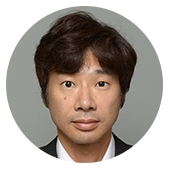The attack unfolds
On November 29, 1987, Korean Air flight 858 was en route from Baghdad to Seoul via Abu Dhabi. It exploded over the Andaman Sea near Myanmar, killing all 115 people on board. Most of the victims were South Korean workers returning from assignments in the Middle East.
The bomb was planted by two people pretending to be a Japanese father and daughter. They had boarded the flight in Baghdad and got off in Abu Dhabi. Ultimately, the pair were detained in their next stop, Bahrain, after their passports were identified as forgeries.
Their documents named them as 'Hachiya Shinichi' and 'Hachiya Mayumi.' South Korean authorities later confirmed that the man was in fact Kim Seung-il and the woman Kim Hyon-hui, both North Korean agents. They had tried to make the attack look as though it had been the work of Japanese nationals.

Kim Seung-il committed suicide in custody in Bahrain by swallowing a potassium cyanide capsule.
Authorities managed to restrain Kim Hyon-hui before she could do the same. She confessed that the attack had been ordered and orchestrated by North Korea. To this day, Pyongyang denies any involvement.
But the North Korean agenda was seen to damage the international credibility of the South Korean government. Seoul was to host the Olympic Games the following year.

Japan's involvement in the investigation
Because the agents used Japanese passports and identities, the Japanese government sent a diplomat to South Korea to question Kim Hyon-hui.
Tanaka Hitoshi was head of a foreign ministry division dealing with Korean peninsula issues. He says he met with Kim Hyon-hui in a mountain hut secured by the Korean Central Intelligence Agency.
"She could speak and understand Japanese," says Tanaka. "At the time I was surprised that she was extremely elite. Why had someone who had graduated from a foreign-language university in Pyongyang, North Korea, blown up a Korean Air Lines plane? And why hadn't she questioned the mission?
"She told me she had been taught from the age of three that the world outside of North Korea was a sham. She also said she had been told that the Democratic People's Republic of Korea was the best place on earth -- and that the rest of the world may be prosperous but only because of capitalistic exploitation. She said it was inevitable that she had believed what she had always been taught."
During one intense session, Kim Hyon-hui delivered a bombshell. The authorities had trained her in all things Japanese so she could go undercover as a Japanese national for espionage in South Korea and elsewhere.
"She said her Japanese instructor was called Lee Un-hae. And she said she had studied Japanese using the magazines Shukan Bunshun and Bungei Shunju as educational materials," says Tanaka.

The Japanese government believes Lee Un-hae was actually Taguchi Yaeko, one of the 17 Japanese citizens abducted by North Korea.
Kim said she and Taguchi had lived together from July 1981 to March 1983 at a spy training facility in North Korea. She said Taguchi had given her a one-on-one education about being Japanese, from language to customs and behavior, right down to the way Japanese women wear makeup.
Kim said she and Taguchi kept each other's identities secret and became quite attached to each other. When they were finally separated, Taguchi gave her a red fountain pen as a parting gift.

"Until (Kim made that revelation), the abductions had just been a kind of suspicion," says Tanaka. "But now, for the first time, I was hearing a North Korean agent saying that she had learned Japanese from a person brought from Japan and that this person had been crying every night. Hearing that from a North Korean agent made the abductions real."
Suspicions confirmed, the abductions became a huge political and diplomatic issue. And Tanaka knew Japan would have to tackle it on its own.
"Basically, Japan's sovereignty had been violated," he says. "Japanese citizens had been taken in broad daylight. We should have prevented this, but we hadn't been able to. This is something Japan needs to resolve. There has been talk of asking the United States to help, but that doesn't sit well with me. It's an issue Japan needs to settle itself."
Death penalty revoked
Kim Hyon-hui was sentenced to death in South Korea in 1989, but received a presidential pardon next year on the grounds that she had been a victim of brainwashing. She went on to write books and give lectures.

She stopped appearing in public after she got married in 1997, but visited Japan in 2010 to help resolve the abductions issue and meet the families of abductees.
Five Japanese abductees were brought home after a summit with North Korea, brokered by Tanaka, in 2002. But relations have since deteriorated.
North Korea has been developing and testing nuclear weapons and missiles, and all progress on the abductions issue has halted.
Tanaka feels that the current crop of bureaucrats and politicians are making insufficient efforts to resolve the situation and says they need to be more aware of the responsibilities of their profession.
"Politicians especially must have the awareness and determination to do the right thing," he says. "I believe this is the most critical element in future negotiations with North Korea."

